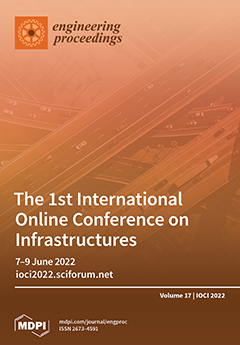The increased awareness of the effects of ecological imbalances associated with construction and industry forced several corporate and governmental bodies to look at avenues for sustainability over a broad spectrum in the 21st century. Most of these industrial and other associations, both governmental
[...] Read more.
The increased awareness of the effects of ecological imbalances associated with construction and industry forced several corporate and governmental bodies to look at avenues for sustainability over a broad spectrum in the 21st century. Most of these industrial and other associations, both governmental and private, started to look for the path to sustainability in a wide variety of sectors ranging from energy, urban development, corporate, agriculture, food, and even in fashion, to meet the requirements through the three known pillars of sustainability, namely environmental, societal, and economic. Coming to infrastructure, sustainability is a crucial part where the activities of design, construction, conservation of resources for future generations, could produce light-weight resilient structures having high strength and performance which improves the life span of the structure. Sustainability of infrastructure and its intricacies plays an incredible role in the assessment methodologies and the governing principles have to satisfy the requirements of three pillars of sustainability without compromising the strength and performance of the structure. The paper is an effort to present a comprehensive outline for the sustainability of resilient infrastructure, activities related to construction and prefabrication, its importance, and its assessment methodologies available presently. Policies such as minimization of construction materials, energy conservation, and use of construction and demolition waste, apart from industrial waste byproducts which, in turn, reduces the impact on environment and also minimizes the emission of CO
2 are advocated. It is felt that innovative, environmentally friendly, and appropriate utilization of materials based on effective research and developmental outcomes are needed. Apart from this the suitability, appropriateness, and limitations of each of the assessment methodologies for ensuring an extended lifespan in particular for the infrastructure are discussed. The aim is leaving the smallest footprint, while suggesting the possible avenues to achieve lasting structural facilities in all forms of infrastructure in future.
Full article




